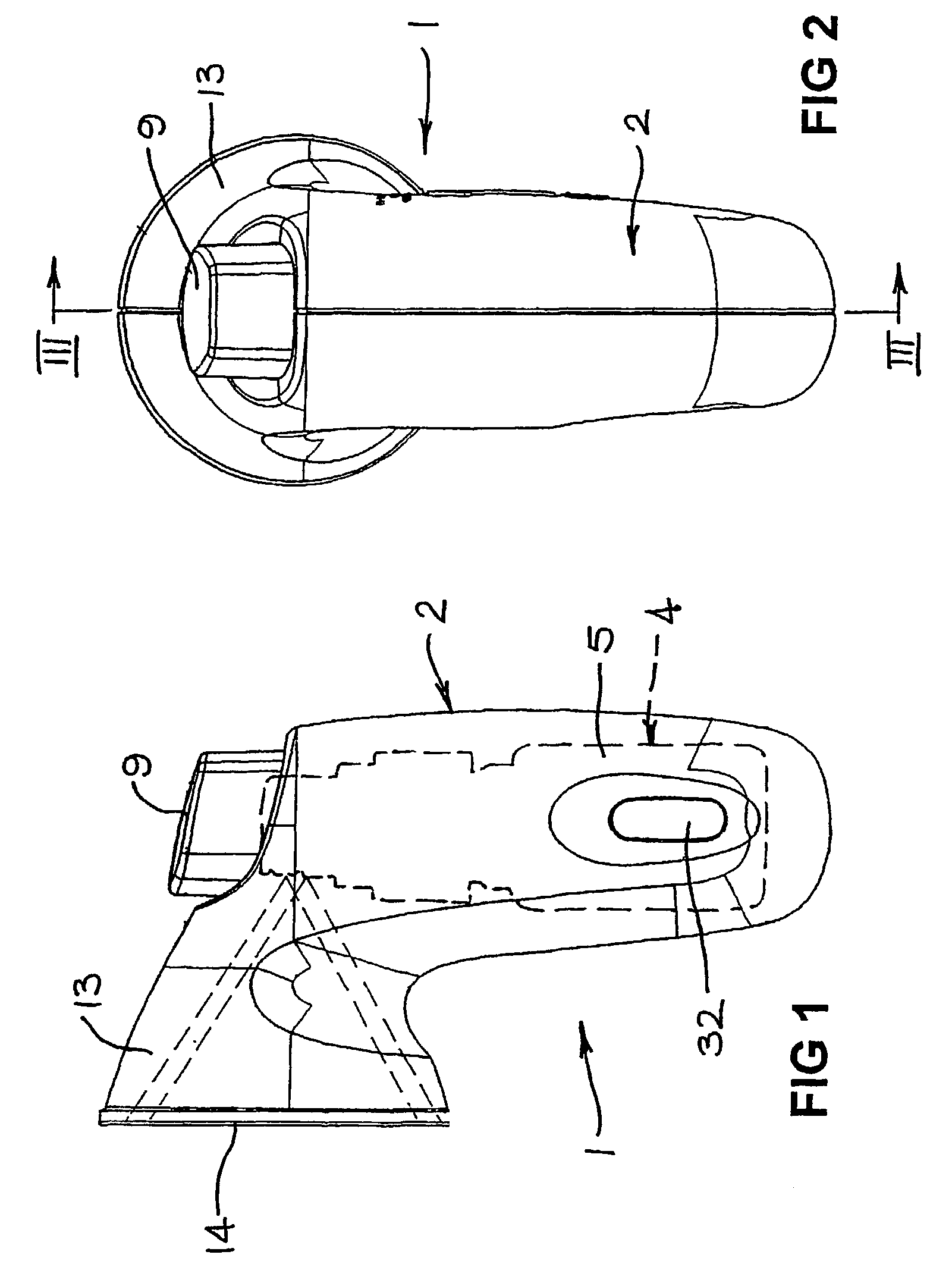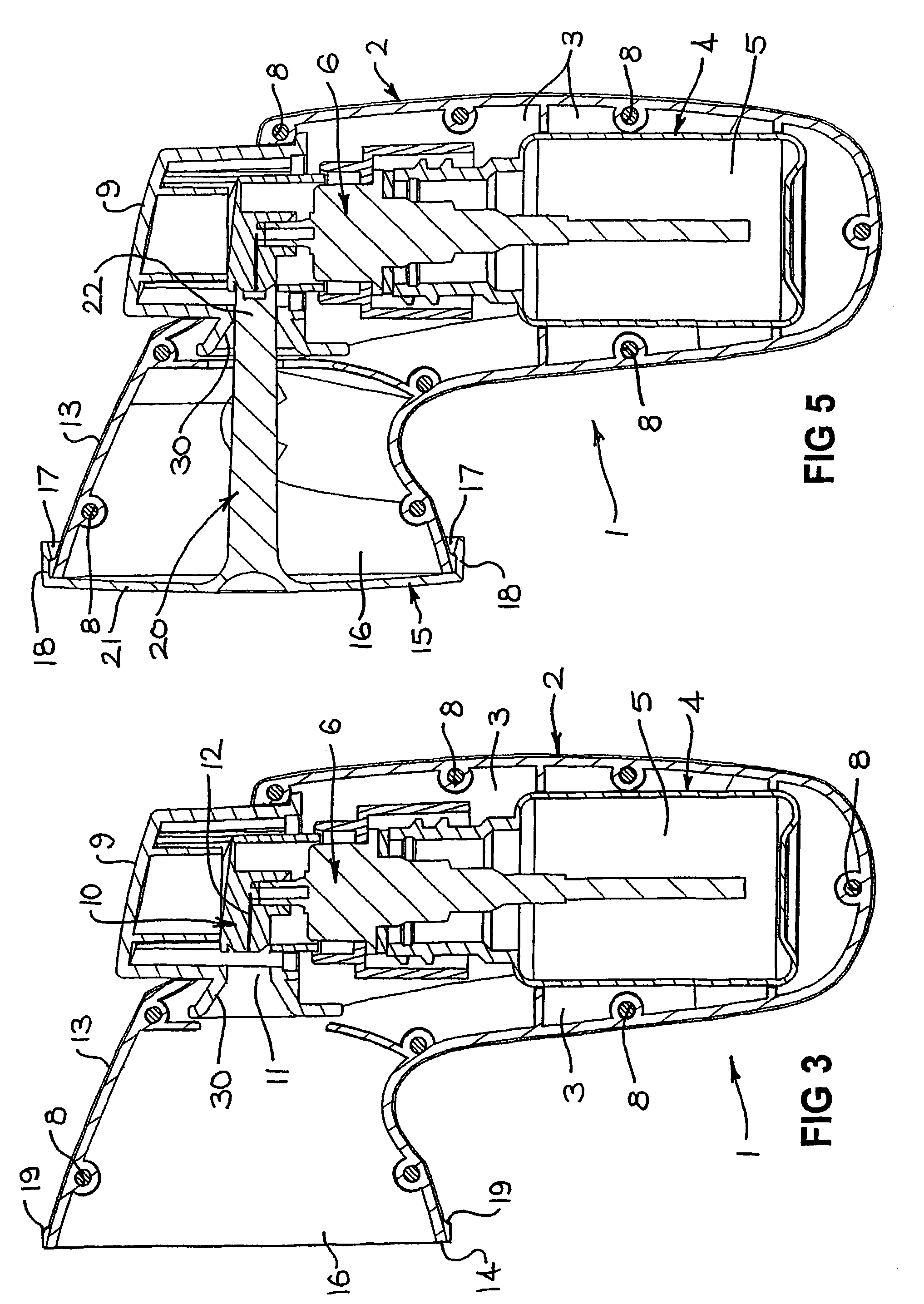Dispensing device
a technology for dispensing devices and substances, applied in the direction of veterinary instruments, lighting and heating apparatuses, combustion types, etc., can solve the problems of complex manufacturing process, poor cosmetic acceptability by users, and major problems of transdermal patches, so as to improve the efficiency and effectiveness of substance dispensing devices
- Summary
- Abstract
- Description
- Claims
- Application Information
AI Technical Summary
Benefits of technology
Problems solved by technology
Method used
Image
Examples
Embodiment Construction
[0047]The example of the dispensing device 1 of the present invention shown in the accompanying drawings includes a hollow body 2 having a chamber 3 (FIG. 3) for receiving a substance capsule 4, which may be replaceable in some circumstances. The contents (the substance) of the capsule 4 will be selected to suit the intended use of the device 1. In the example shown, the capsule 4 includes a substance container 5 and a manually operable pump 6 (FIG. 3) for dispensing a metered quantity of the substance. Other arrangements could be adopted, such as an aerosol-type dispenser, in which event a suitable control valve (not shown) would be provided within the upper part, or some other convenient part, of the capsule 4.
[0048]In a preferred application of the device 1, the substance stored in the container 5 includes a physiologically active agent in liquid solution, and a carrier selected to promote absorption of the active agent through the skin of a host animal (eg., a human). The liquid...
PUM
| Property | Measurement | Unit |
|---|---|---|
| closing force | aaaaa | aaaaa |
| size | aaaaa | aaaaa |
| flexible | aaaaa | aaaaa |
Abstract
Description
Claims
Application Information
 Login to View More
Login to View More - R&D
- Intellectual Property
- Life Sciences
- Materials
- Tech Scout
- Unparalleled Data Quality
- Higher Quality Content
- 60% Fewer Hallucinations
Browse by: Latest US Patents, China's latest patents, Technical Efficacy Thesaurus, Application Domain, Technology Topic, Popular Technical Reports.
© 2025 PatSnap. All rights reserved.Legal|Privacy policy|Modern Slavery Act Transparency Statement|Sitemap|About US| Contact US: help@patsnap.com



